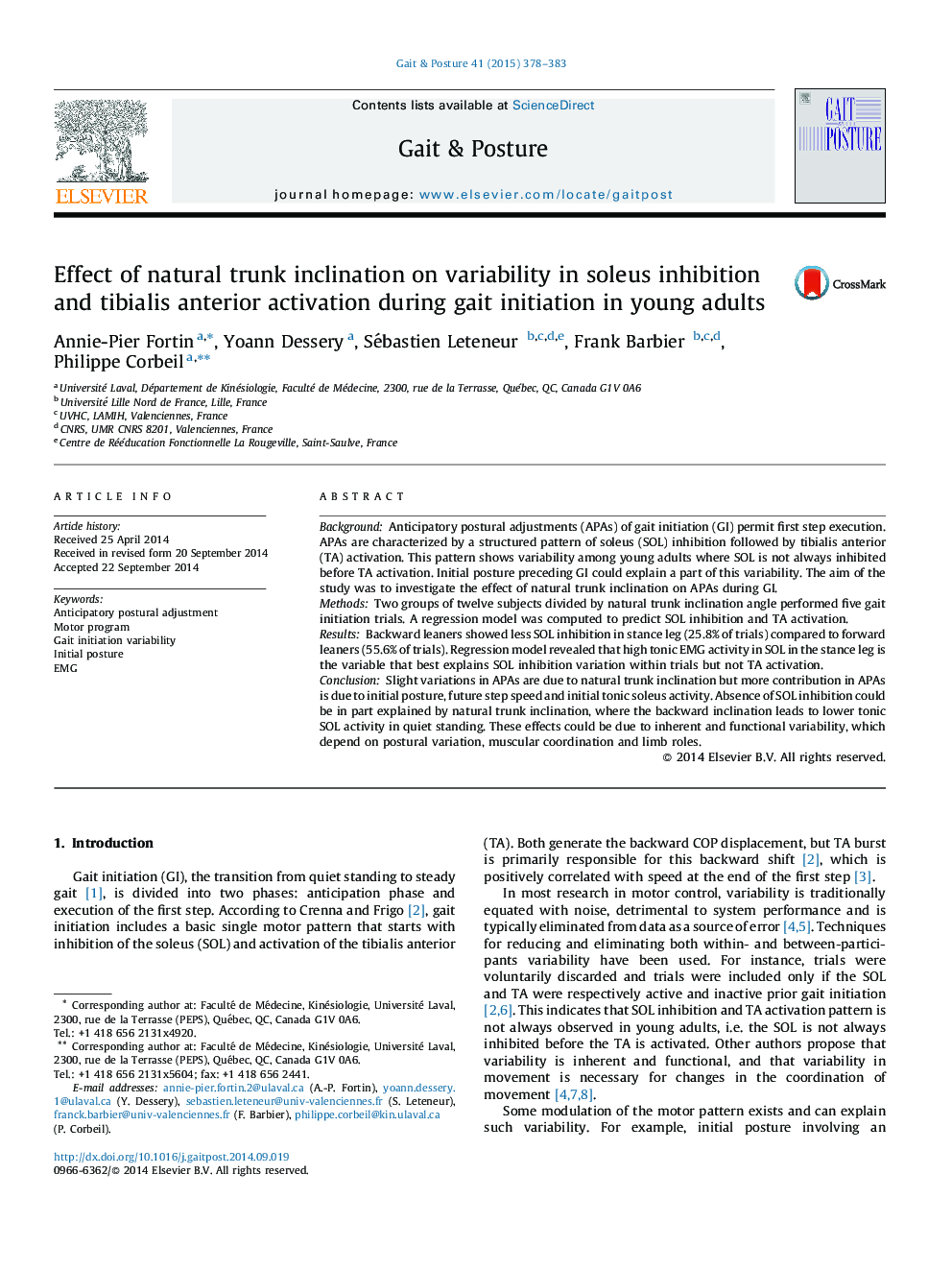| کد مقاله | کد نشریه | سال انتشار | مقاله انگلیسی | نسخه تمام متن |
|---|---|---|---|---|
| 6206082 | 1265640 | 2015 | 6 صفحه PDF | دانلود رایگان |
- Natural trunk inclination affects gait initiation in young adults.
- Backward leaners showed less soleus inhibition in APA than forward leaners.
- Initial soleus activity was the best predictor variable for soleus inhibition.
BackgroundAnticipatory postural adjustments (APAs) of gait initiation (GI) permit first step execution. APAs are characterized by a structured pattern of soleus (SOL) inhibition followed by tibialis anterior (TA) activation. This pattern shows variability among young adults where SOL is not always inhibited before TA activation. Initial posture preceding GI could explain a part of this variability. The aim of the study was to investigate the effect of natural trunk inclination on APAs during GI.MethodsTwo groups of twelve subjects divided by natural trunk inclination angle performed five gait initiation trials. A regression model was computed to predict SOL inhibition and TA activation.ResultsBackward leaners showed less SOL inhibition in stance leg (25.8% of trials) compared to forward leaners (55.6% of trials). Regression model revealed that high tonic EMG activity in SOL in the stance leg is the variable that best explains SOL inhibition variation within trials but not TA activation.ConclusionSlight variations in APAs are due to natural trunk inclination but more contribution in APAs is due to initial posture, future step speed and initial tonic soleus activity. Absence of SOL inhibition could be in part explained by natural trunk inclination, where the backward inclination leads to lower tonic SOL activity in quiet standing. These effects could be due to inherent and functional variability, which depend on postural variation, muscular coordination and limb roles.
Journal: Gait & Posture - Volume 41, Issue 2, February 2015, Pages 378-383
